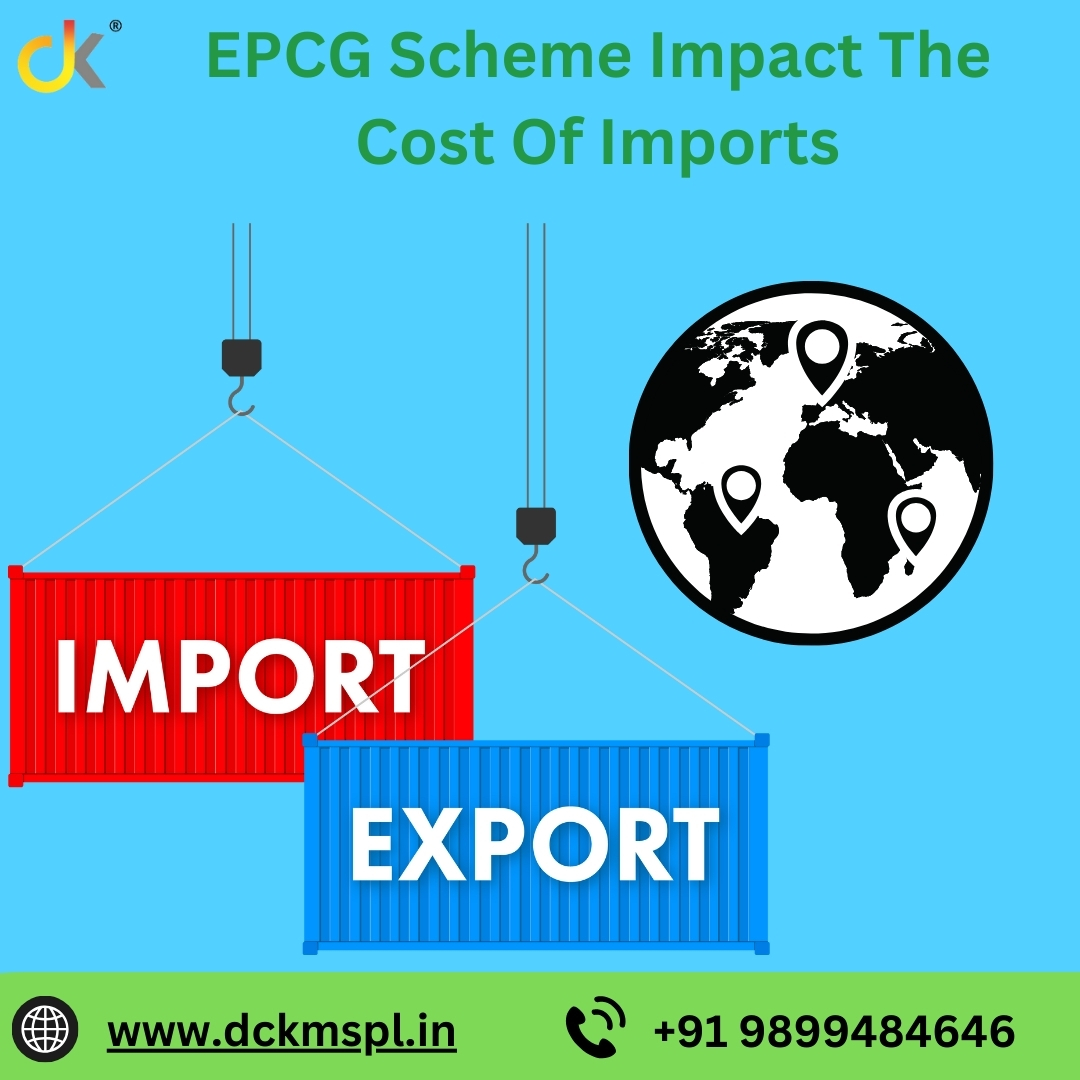The Export Promotion Capital Goods (EPCG) Scheme is a trade facilitation measure introduced by the Government of India to promote exports and enhance the competitiveness of Indian exporters. Under this scheme, exporters can import capital goods at concessional rates of customs duty or even duty-free, subject to certain conditions.
Key Features of the EPCG Scheme:
- Zero Customs Duty: Exporters can import capital goods for pre-production, production, and post-production at zero customs duty.
- Exemption from IGST and Compensation Cess: In addition to zero customs duty, capital goods imported under the EPCG scheme are also exempt from Integrated Goods and Services Tax (IGST) and Compensation Cess.
- Export Obligation: Exporters are required to export goods worth six times the value of the customs duty saved on imported capital goods within a specified period.
- Product Requirement: The exported products must be manufactured using the imported capital goods.
- Eligibility Criteria: Exporters must meet certain eligibility criteria, such as being registered with the Directorate General of Foreign Trade (DGFT) and having a valid export order.
Benefits of the EPCG Scheme:
- Reduced Production Costs: By importing capital goods at a lower cost, exporters can reduce their overall production costs, making their products more competitive in the global market.
- Technology Upgradation: The EPCG scheme encourages exporters to invest in modern machinery and technology, which can improve their productivity and product quality.
- Enhanced Competitiveness: The EPCG scheme helps Indian exporters to become more competitive in the global market.
- Job Creation: The EPCG scheme can promote job creation in the export sector.
- Economic Growth: By boosting exports, the EPCG scheme can contribute to the economic growth of India.
Extended Producer Responsibility (EPR) is a policy that holds producers responsible for the entire lifecycle of their products, including
end-of-life management. In the context of battery waste management, it means that manufacturers of batteries are obligated to collect, recycle, or recover a certain percentage of their battery waste.
Key Points:
- Producer Responsibility: EPR mandates producers to establish collection systems, recycling facilities, and ensure proper disposal of used batteries.
- Environmental Impact: Improper disposal of batteries can lead to soil, water, and air pollution due to hazardous materials contained within them.
- Regulatory Compliance: Producers must register with the Central Pollution Control Board (CPCB) and comply with the Battery Waste Management Rules, 2022.
- Benefits: EPR promotes sustainable battery management, reduces environmental harm, and encourages innovation in recycling technologies.
Registration Process:
- Online Registration: Producers must register on the centralized online portal developed by CPCB.
- Document Submission: Required documents include GST certificate, TIN number, CIN number, Aadhar card, PAN card, and company incorporation details.
- Waste Management Plan: Producers must submit a waste management plan outlining their strategies for collection, recycling, and disposal.
- Compliance: Producers must ensure compliance with EPR regulations and submit regular reports to CPCB.
EPR Registration is crucial for responsible battery waste management and contributes to a cleaner and healthier environment.
The Export Promotion Capital Goods (EPCG) Scheme is a trade facilitation measure introduced by the Government of India to promote exports and enhance the competitiveness of Indian exporters. Under this scheme, exporters can import capital goods at concessional rates of customs duty or even duty-free, subject to certain conditions.
Impact of EPCG Scheme on the Cost of Imports
The EPCG scheme significantly reduces the cost of imports for exporters in the following ways:
- Zero Customs Duty: Exporters can import capital goods under the EPCG scheme at zero customs duty, leading to substantial cost savings.
- Exemption from IGST and Compensation Cess: In addition to zero customs duty, capital goods imported under the EPCG scheme are also exempt from Integrated Goods and Services Tax (IGST) and Compensation Cess.
- Reduced Production Costs: By importing capital goods at a lower cost, exporters can reduce their overall production costs, making their products more competitive in the global market.
- Technology Upgradation: The EPCG scheme encourages exporters to invest in modern machinery and technology, which can improve their productivity and product quality.
Eligibility Criteria and Export Obligations
To avail the benefits of the EPCG scheme, exporters must meet certain eligibility criteria and fulfill export obligations:
- Export Obligation: Exporters are required to export goods worth six times the value of the customs duty saved on imported capital goods within a specified period.
- Product Requirement: The exported products must be manufactured using the imported capital goods.
- Other Criteria: Exporters must also meet other eligibility criteria, such as being registered with the Directorate General of Foreign Trade (DGFT) and having a valid export order.
Benefits of the EPCG Scheme
- Enhanced Competitiveness: The EPCG scheme helps Indian exporters to become more competitive in the global market by reducing their production costs.
- Technology Upgradation: Exporters can invest in modern machinery and technology to improve their productivity and product quality.
- Job Creation: The EPCG scheme can promote job creation in the export sector.
- Economic Growth: By boosting exports, the EPCG scheme can contribute to the economic growth of India.
Conclusion
The EPCG scheme is a valuable tool for Indian exporters looking to reduce the cost of imports and enhance their competitiveness. By providing duty-free imports of capital goods, the scheme enables exporters to lower their production costs and offer their products at competitive prices in the global market. However, it is important for exporters to carefully understand the eligibility criteria and export obligations associated with the EPCG scheme to maximize its benefits.




